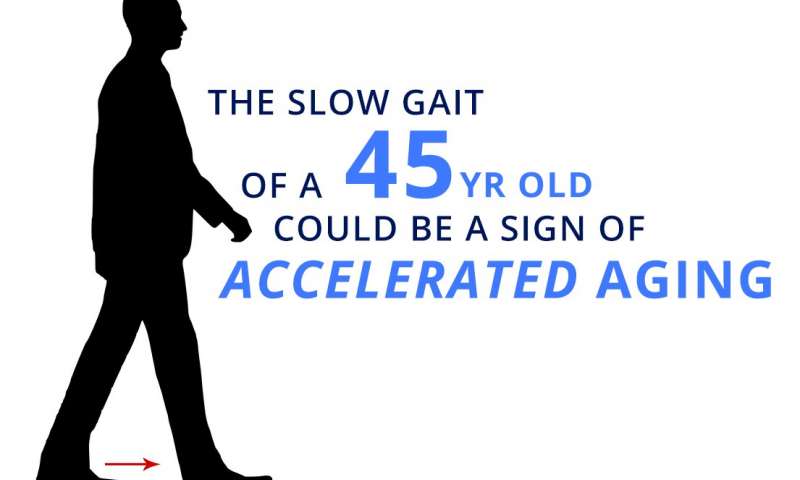

1.incidence (n)
an event, or the rate at which something happens
2. lesions (n)
an injury to a person’s body or to an organ inside their body
3. gait (n)
a particular way of walking
4. panel (n)
a small group of people chosen to give advise, make a decision, or publicly discuss their opinions as entertainment
5. geriatric (adj)
for or relating to older people
6. cognition (n)
the use of conscious mental processes
7. devised (v)
to invent a plan, system, object,etc., usually using your intelligence or imagination
Slower walkers have older brains and bodies at 45

The walking speed of 45-year-olds, particularly their fastest walking speed without running, can be used as a marker of their aging brains and bodies.
Slower walkers were shown to have “accelerated aging” on a 19-measure scale devised by researchers, and their lungs, teeth and immune systems tended to be in worse shape than the people who walked faster.
“Doctors know that slow walkers in their seventies and eighties tend to die sooner than fast walkers their same age,” said senior author Terrie E. Moffitt, the Nannerl O. Keohane University Professor of Psychology at Duke University, and Professor of Social Development at King’s College London. “But this study covered the period from the preschool years to midlife, and found that a slow walk is a problem sign decades before old age.”
MRI exams during their last assessment showed the slower walkers tended to have lower total brain volume, lower mean cortical thickness, less brain surface area and higher incidence of white matter “hyperintensities,” small lesions associated with small vessel disease of the brain. In short, their brains appeared somewhat older.
Adding insult to injury perhaps, the slower walkers also looked older to a panel of eight screeners who assessed each participant’s ‘facial age’ from a photograph.
Gait speed has long been used as a measure of health and aging in geriatric patients, but what’s new in this study is the relative youth of these study subjects and the ability to see how walking speed matches up with health measures the study has collected during their lives.
Some of the differences in health and cognition may be tied to lifestyle choices these individuals have made. But the study also suggests that there are already signs in early life of who would become the slowest walkers, Rasmussen said. “We may have a chance here to see who’s going to do better health-wise in later life.”
Resource: https://medicalxpress.com/news/2019-10-slower-walkers-older-brains-bodies.html

- Who is Terrie Moffitt?
- What two age groups were mentioned by Terrie Moffitt?
- What speeds did people have to walk at in the researchers’ tests?
- In what two ways could the ageing show itself?
“I feel thin, sort of stretched, like butter scraped over too much bread.”
J.R.R. Tolkien

 A
A

